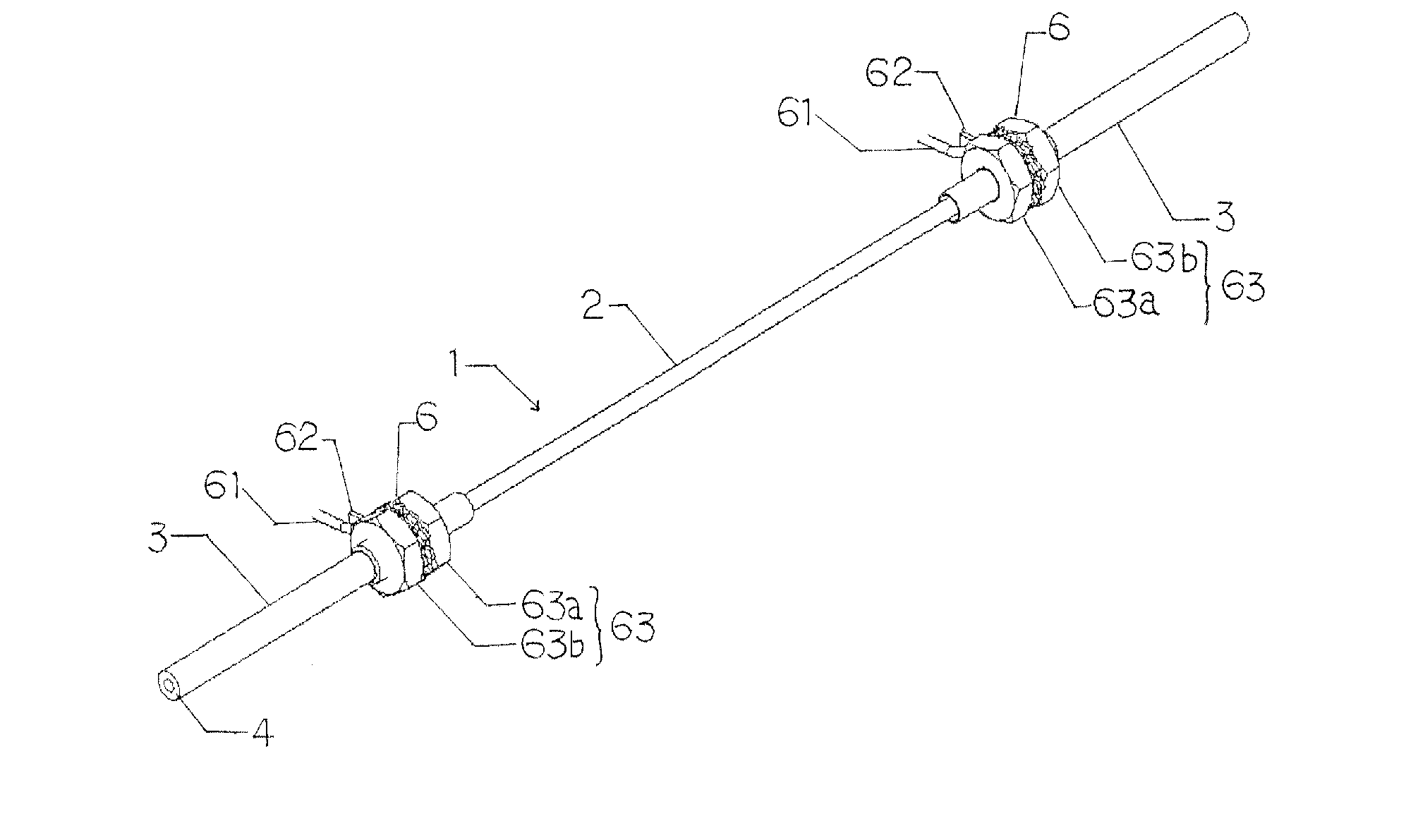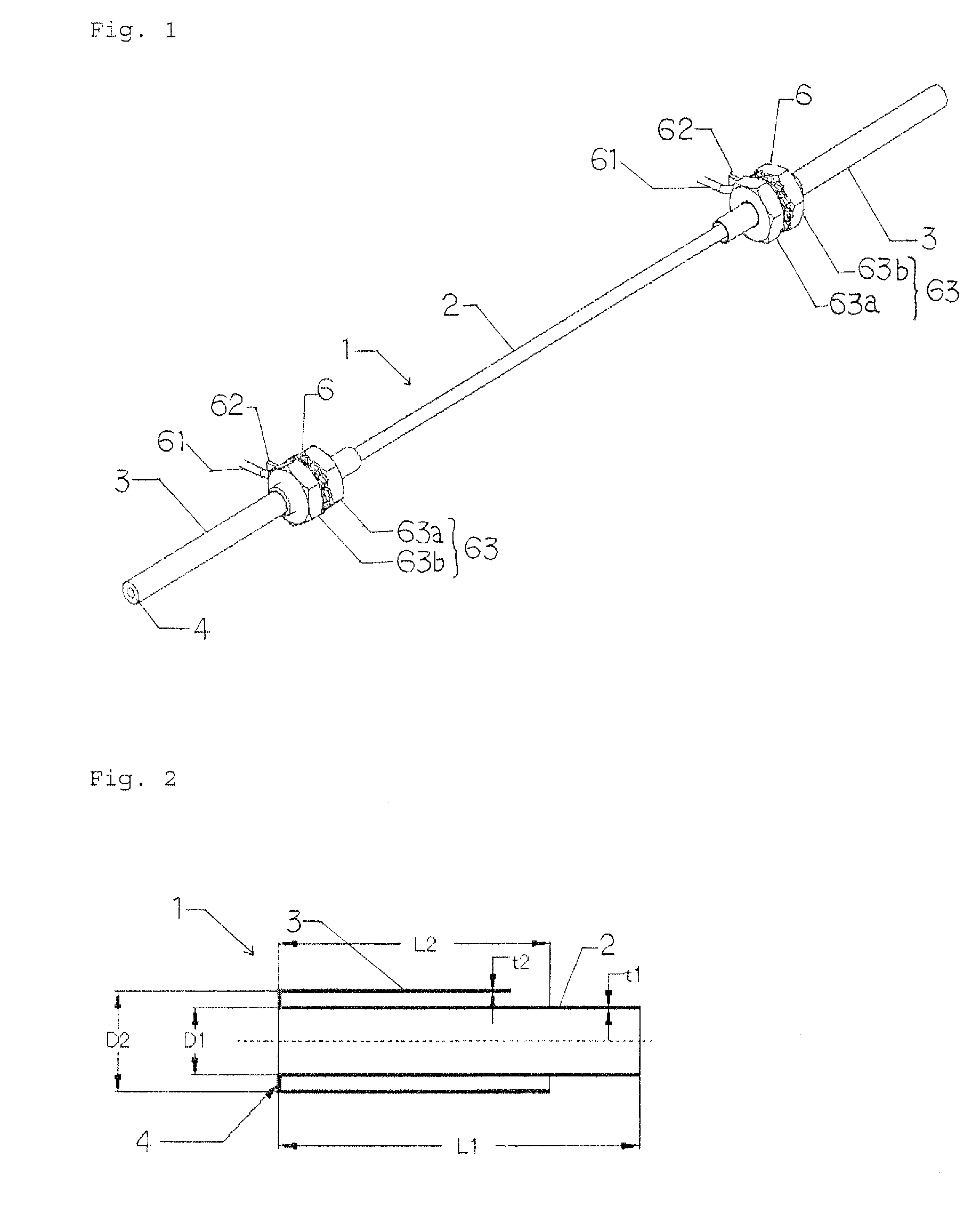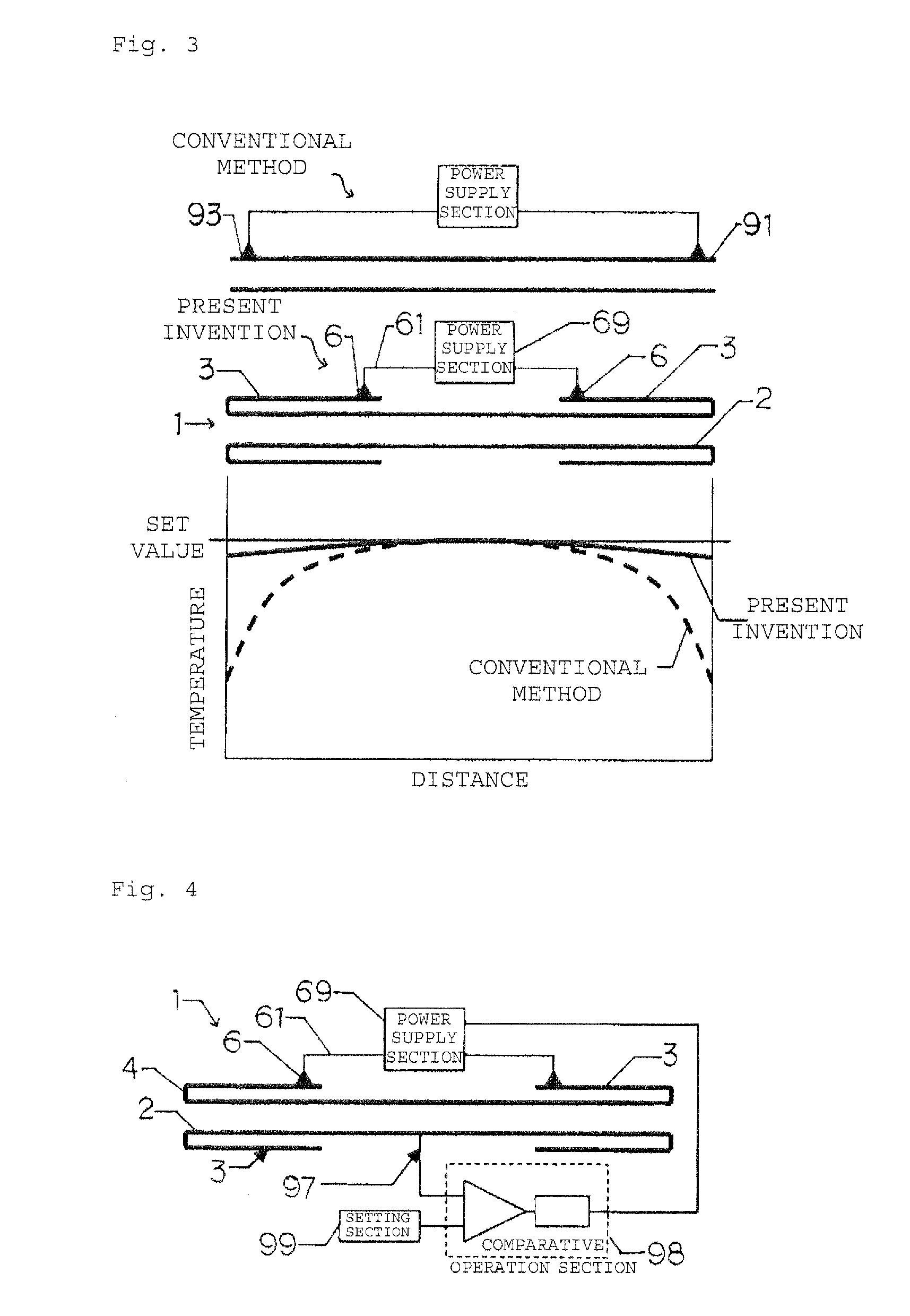Direct heating tube and method of heating fluid using same
a technology of direct heating and heating fluid, which is applied in the direction of ohmic-resistance heating, water heaters, water circulation, etc., can solve the problems of risk, heat tubes, and conventional methods of heating columns, and achieve uniform temperature distribution, sufficient cooling rate, and sufficient heating rate
- Summary
- Abstract
- Description
- Claims
- Application Information
AI Technical Summary
Benefits of technology
Problems solved by technology
Method used
Image
Examples
embodiment 1
[0051]FIG. 5 is a longitudinal sectional view of an embodiment in which a direct heating tube 1 of the present invention is used in a sample introduction portion of a gas chromatogram. A first heated tube 2 constitutes a sample vaporization portion, a flange 4 is implanted in a standing manner radially from a lower end of the first heated tube 2, and a second heated tube 3 is installed at a peripheral end of the annular flange 4 made of a sheet to the roughly middle point of the first heated tube 2 concentrically with the first heated tube 2. As with the sample introduction portion of a usual gas chromatogram, this sample introduction portion is constituted by a column 80, a liner 81, a carrier gas line 82, a discharge line 83, a septum 84 and the like. The first heated tube 2 and the second heated tube 3 and the flange 4 are assembled by welding. A flange 71 is provided in an upper end portion of the second heated tube 3, a tube 72 is provided at a peripheral end of the flange 71, ...
embodiment 2
[0053]FIG. 8 is a longitudinal sectional view of an embodiment in which a direct heating tube of the present invention is applied to a column for a cryotrap of a gas chromatogram. In the tube 1, the first heated tube 2 had a total length of 100 mm, the first heated tube 2 had an inner diameter of 1 mm and a wall thickness of 0.05 mm, annular sheet flanges 4, 4 having a height of 0.95 mm from both end portions of the first heated tube 2 were formed, second heated tubes 3 were installed from the flange 4 concentrically with the first heated tube 2, and the second heated tubes 3 each had a length of 30 mm, an inside diameter of 3 mm, and a wall thickness of 0.05 mm. For an electrode portion 6, a conductor 61 was connected to an electrode plate 62, the second heated tube 3 was inserted through the electrode plate 62 and fixed by being supported from both sides thereof by use of a double nut 63. Thus, the electrode portion 6 was installed in a position 20 mm from the flange 4. The materi...
embodiment 3
[0054]FIG. 9 is a longitudinal sectional view of an embodiment in which a direct heating tube of the present invention is applied to a connection between a column end of a gas chromatogram and a detector 5 (here, an FID) A heat tube having a total length of 60 mm was used as a tube 1. Flanges 4, 4 were provided at both ends of a first heated tube 2 having a total length of 60 mm and an outside diameter of 1.6 mm, and second heated tubes 3, 3 having a total length of 24 mm were provided from peripheral end portions of the flanges 4, 4 toward the center of the first heated tube 2. The material for the first heated tube 2 and the second heated tube 3 is stainless steel. An annular sheet flange 4 having a width of 0.8 mm is used as the flange 4 on the detector 5 side of the heat tube. However, in the connection between the first heated tube 2 and the second heated tube 3 on the column side, a column connection port 49 made of stainless steel is used as the flange 4. As the fabrication m...
PUM
 Login to View More
Login to View More Abstract
Description
Claims
Application Information
 Login to View More
Login to View More - R&D
- Intellectual Property
- Life Sciences
- Materials
- Tech Scout
- Unparalleled Data Quality
- Higher Quality Content
- 60% Fewer Hallucinations
Browse by: Latest US Patents, China's latest patents, Technical Efficacy Thesaurus, Application Domain, Technology Topic, Popular Technical Reports.
© 2025 PatSnap. All rights reserved.Legal|Privacy policy|Modern Slavery Act Transparency Statement|Sitemap|About US| Contact US: help@patsnap.com



